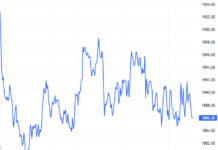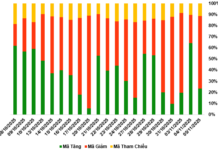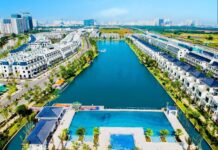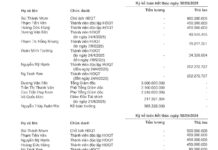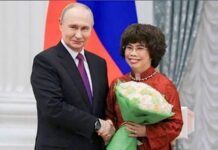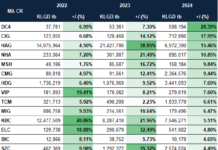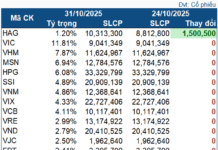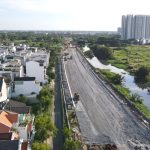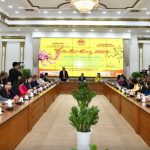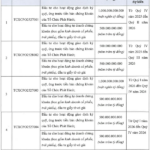In addition to regularly reporting on the situation and proposing solutions to remove obstacles related to land funds in existing export processing zones and industrial parks (EPZs-IPs) and newly approved IPs, the Management Board of EPZs and IPs of Ho Chi Minh City (Hepza) has proposed to the city to supplement 11 land plots for industrial development in the future.
Having land but unable to lease it
In the first six months of 2024, the total investment capital attracted to Ho Chi Minh City’s EPZs-IPs reached 271.99 million USD, equivalent to 49.45% of the yearly plan. The leased land area reached 5.05 hectares, and the leased factory area reached 24,907 square meters.
Ms. Nguyen Thi Bich Ngoc, Head of the Investment Management Department of Hepza, said that in 2024, Ho Chi Minh City aims to attract 550 million USD in investment into EPZs-IPs. Statistics from infrastructure companies show that the city has 73 hectares of industrial land that can attract investment, but only over 5 hectares were leased in the first six months. “This shows that we have the product, but it is challenging to attract investment due to fragmented and non-contiguous land plots,” Ms. Ngoc said. She added that Ho Chi Minh City focuses on attracting investment in green and digital transformation projects, which require large land areas to invest in complete infrastructure. Currently, the land fund cannot meet the demands of investors.”
Regarding the difficulties in land funds, Ms. Ngoc said that this is a long-standing problem, mainly related to site clearance and compensation, public assets, etc.
According to the planning until 2020, Ho Chi Minh City has 22 EPZs-IPs with a concentrated area of 5,914 hectares. Currently, three EPZs and 16 IPs have been established with a total land area of more than 4,546 hectares, achieving 77% of the total planned land area. About 80% of the area in the EPZs-IPs being exploited is already occupied, and the remaining area is scattered and fragmented, making it unable to meet the requirements of investors. Meanwhile, some IPs, such as Tay Bac Cu Chi, Vinh Loc, Le Minh Xuan, Le Minh Xuan 2, and Hiep Phuoc, are slow in implementing the expansion phase as planned to have more land to receive investment. For example, Hiep Phuoc IP Phase 3 still has 500 hectares of unexploited land, and Le Minh Xuan II IP has 300 hectares of clean land but is legally entangled.
In 2023, the city was approved by the government to add the Pham Van Hai IP (in Binh Chanh district) with an area of 668 hectares. However, according to infrastructure enterprises’ calculations, it will take until 2026-2027 to have land available for lease. Pham Van Hai I IP is currently undergoing the necessary steps for the planning phase, including preparing for the approval of the investment proposal.
Regarding Le Minh Xuan II IP, Ms. Nguyen Thi Bich Ngoc said that the city is directing relevant departments to select suitable investors to implement the project soon. “The process is ongoing, and we are trying to resolve the project’s difficulties,” Ms. Ngoc informed.
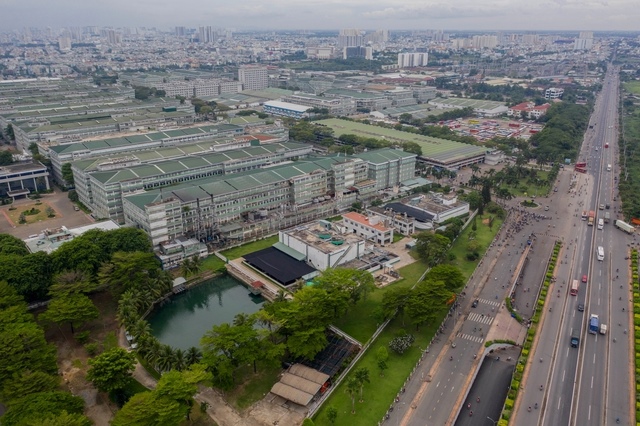 Ho Chi Minh City needs to address obstacles related to land funds to attract investment in high-tech and green technology fields. Pictured: Tan Tao Industrial Park (Binh Tan District). Photo: HOANG TRIEU |
Supplementing 11 IPs: Is it feasible?
Mr. Tran Viet Ha, Deputy Head of Hepza, emphasized that land funds are one of the basic ingredients for investment attraction. “To put it simply, if you want to cook rice, you need rice, and if you want to attract investment, you need land. For many years, Hepza has continuously reported on the lack of land for investment attraction and proposed solutions to the city. We have also suggested orientations for industrial parks to attract investment in the future. However, the difficulties remain unresolved,” Mr. Ha expressed.
Regarding current solutions, Mr. Tran Viet Ha said that Hepza is trying to make the most of the remaining land funds and factories that inefficient businesses are transferring to attract new investors.
According to Hepza, most IPs in Ho Chi Minh City have been operating for 10-20 years, and their planning has become outdated compared to new standards. The IPs are reviewing their planning to make adjustments and improve land use efficiency in areas with remaining land.
Mr. Nguyen Thanh Binh, Head of the Construction Planning Department of Hepza, stated that to develop the industry as one of the key economic sectors in the new phase, Ho Chi Minh City needs to supplement the land planning for IPs. “Hepza has coordinated with departments, branches, and localities to find inefficiently exploited agricultural land and proposed converting it into land for industrial and service development. We have also provided many comments to the Department of Planning and Architecture and the Department of Planning and Investment – the two agencies leading the city’s two planning schemes – to propose developing 11 land plots into 11 new IPs with a total area of about 4,127 hectares. We are closely monitoring the situation to include these locations in the city’s master plan,” Mr. Binh informed.
From a business perspective, Mr. Dao Xuan Duc, Chairman of the Ho Chi Minh City Industrial Parks Business Association (HBA), said that the proposal to include 11 new IPs in the planning is a forward-looking calculation. The immediate task is to remove obstacles for IPs already approved by the government, resolve difficulties for each area, and focus on processing clean land to attract investment.
“With 22 EPZs-IPs already planned, the number has not been fully implemented yet. If there is a need for additional IPs, priority should be given to implementing the existing plans. Each IP has its own unique land-related challenges, and efforts should be made to address them. The city has been aware of these difficulties and has held meetings and implemented solutions, but the problems remain unresolved. Therefore, more determined and effective solutions are necessary,” Mr. Duc suggested.
|
Missing out on many opportunities Mr. Dao Xuan Duc pointed out that Pham Van Hai IP was converted from agricultural land. The necessary steps include land retrieval, planning supplementation, and investor auction, but progress has been slow for more than a year since its approval. According to Mr. Duc, Ho Chi Minh City has many opportunities to attract high-tech investment because well-known corporations want to come here. Still, they cannot due to the city’s inability to meet their land requirements. “Resolution 98/2023 allows the city to attract investment in high-tech projects with a scale of 30,000 billion VND, but where will the city find 200-300 hectares of land for such a project? Many high-tech projects have approached Ho Chi Minh City but had to turn to other localities because we lack the necessary land,” Mr. Duc stated. |
|
There is an investment shift According to Mr. Tran Viet Ha, there is an investment shift in the EPZs-IPs. Businesses using simple technology and labor-intensive industries are gradually giving way to high-tech, digital, and software fields. In the past, some enterprises producing simple technology and operating inefficiently or reaching the end of their land lease term have ceased operations. Hepza has facilitated some high-tech investors to lease these lands to expand their projects. “An electrical-electronics enterprise in Linh Trung EPZ has leased additional land and invested more than 30 million USD to expand its production scale. In addition, Tan Thuan EPZ has about 250 operating projects, many of which are still producing food, alcohol, and vegetables but are undergoing a transition,” Mr. Ha illustrated. Mr. Ha added that some investors are interested in establishing data centers in the IPs. Data centers are a new industry that has emerged in recent years, requiring a large and stable power supply and infrastructure capable of supporting the data’s bandwidth requirements. Ho Chi Minh City’s EPZs-IPs were established nearly 30 years ago, necessitating a planning shift to accommodate new industries’ requirements. |
THANH NHAN
Proposed Planning for Adding 2 New Cities in Ho Chi Minh City
According to Architect Ngô Viết Nam Sơn, Ho Chi Minh City should consider planning two cities within the city in the south and north.
Three Economic Growth Scenarios for Ho Chi Minh City in Q1 2024
At the socio-economic meeting reviewing the results of January and setting the goals for February 2024, held this morning (1/2), the Ho Chi Minh City Institute for Research and Development has presented three economic growth scenarios for the first quarter of Ho Chi Minh City.

